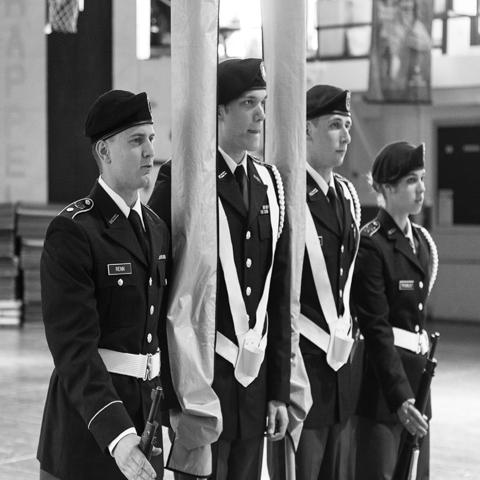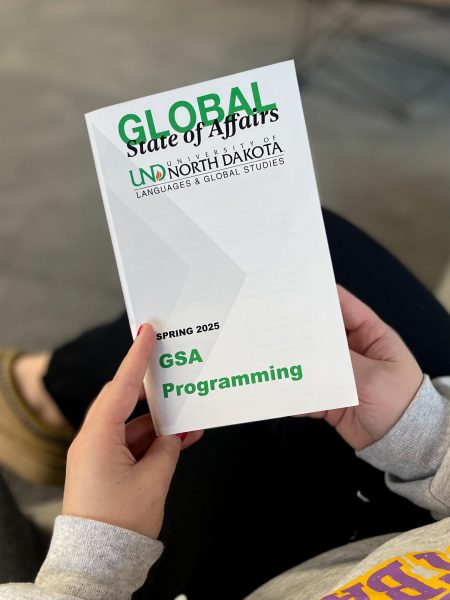ROTC offers students leadership skills
ROTC students stand at attention. Photo by Nick Nelson/The Dakota Student.
Reserve Officer Training Corps, or ROTC, is a four-year military program on campus for training civilians or currently enlisted soldiers to be an officer in the United States military.
ROTC teaches through different classes the different aspects of being a leader.
Military science I introduces the cadet to army leadership, the foundation of becoming an officer, to basic military operations and training, such as map reading.
Military science II furthers the cadet’s knowledge for becoming an officer with introducing applied leadership theory to principles of war. Also, the cadet takes on a role of a team leader, the lowest level of military organization, in charge of between four to six soldiers.
Military science III introduces the soldier to team dynamics and peer leadership by taking on the role of a squad leader, being the leader of around 10 soldiers, to command and staff functions.
Military science IV is the senior part of the ROTC program and puts the cadet in the highest level of leadership in a company. Platoon sergeants are in command of between 30 to 40 soldiers and a company commander is in command of anywhere between 80 to 200 soldiers.
“Many cadets who join ROTC are prior service in the National Guard or are currently serving in the National Guard and they want to be leaders,” UND ROTC enrollment and scholarship officer Chester Carnevale said.
ROTC also offers many courses through which to challenge students’ physical endurance and knowledge.
The Field Training Exercise is held in the fall at Camp Ripley, Minn. There, students will camp for a weekend to learn about rifle marksmanship with the M5 carbine, grenade basics and team leadership through the use of obstacle courses. They also will utilize their previously learned skills in a land navigation course using a map and a compass to find predetermined points on their map.
The Leadership and Development Course is a 29-day summer program held at Fort Knox, K.Y. for juniors transitioning to seniors. It is known as the centerpiece of the ROTC program, or as the “Warrior Forge.”
Cadets undergo a variety of courses from day and night land navigation and a grenade assault course, to repelling off a 37 and 17 foot wall and conducting a four day Squad Situational Training Exercises lane and two days of patrolling.
In addition to many challenging courses and training that the ROTC offers the cadet, many also enlist in air assault school, which involves a 12 day course consisting of rappelling, fast roping, sling loading equipment to helicopters and a 12 mile timed ruck march.
This class is one of two that upon completion will earn the cadet either the air assault badge or the airborne badge, both of which can be worn on the uniform for the rest of their career in the military.
“Whether the cadet’s plan is to be an officer in the military or to be a leader in a civilian workplace setting, the ROTC on campus is an excellent program in which to accomplish this,” Carnevale said.
Colin Johnson is a staff writer for The Dakota Student. He can be reached at [email protected].







